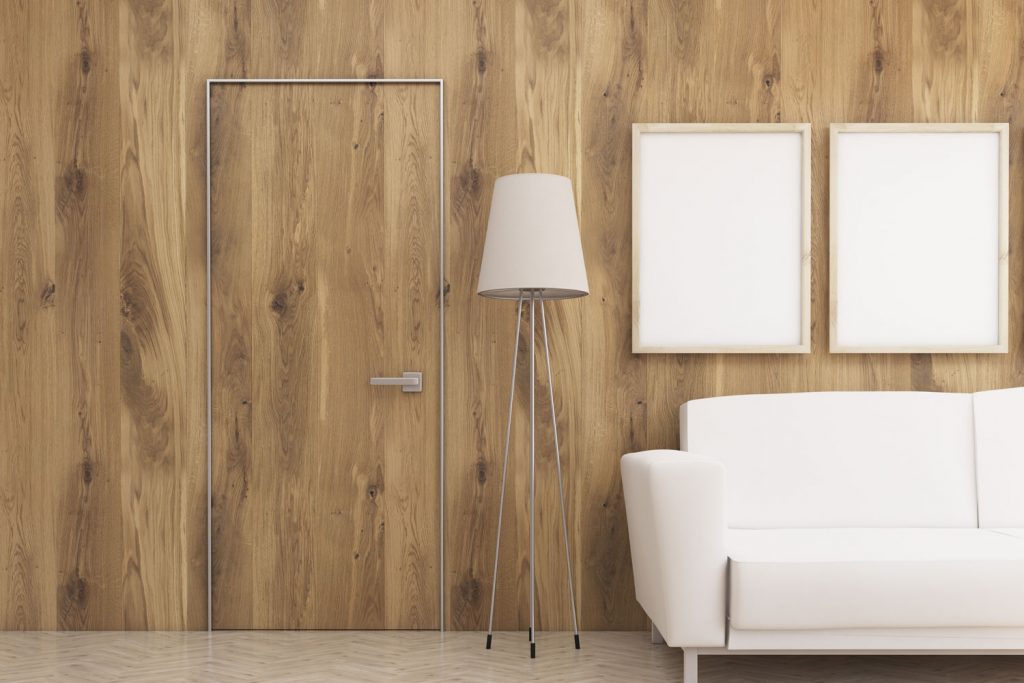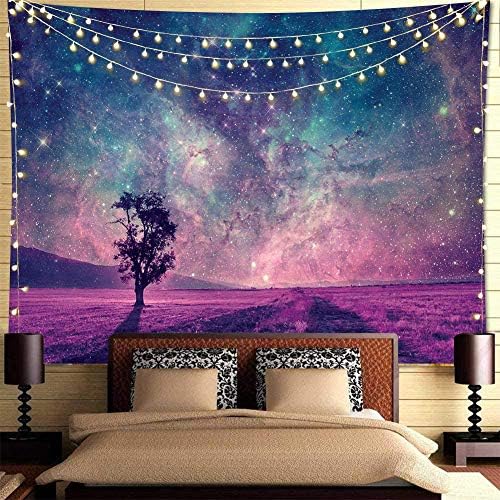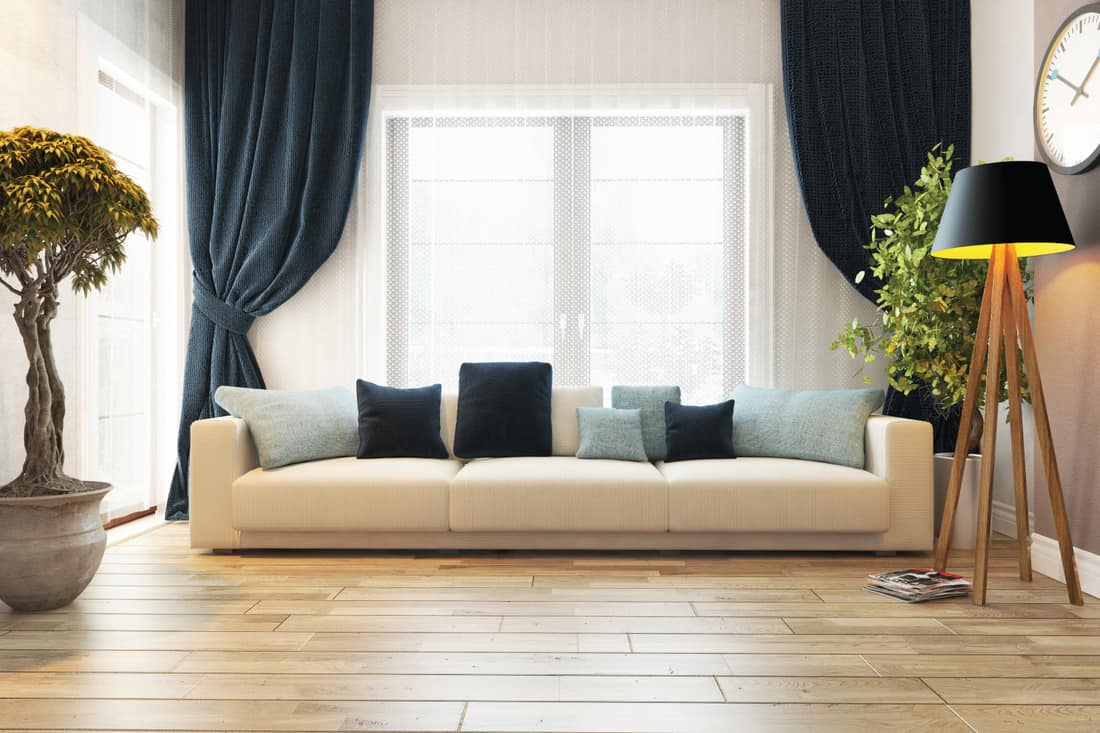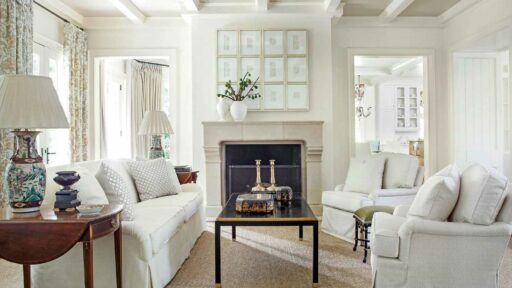Have you ever stared at an unused doorway and wondered how to make it disappear? Those awkward openings between rooms can disrupt your design flow and waste valuable space.
Here’s the good news: Artful concealment of neglected doorways can convert them into an integral component of the room design. Covering an unused doorway can be tricky, but in this blog, we’ll walk you through creative strategies that actually work.
What you’ll get: From functional storage solutions to eye-catching decorative covers, these ideas promise to hide those dormant doorways while improving your room’s functionality and ambiance.
Ready to redesign that eyesore into a design feature? Let’s learn practical ways to enhance your living space with a touch of creativity.
Hiding the Unused Living Room Door
1. Bookshelf Solution

Repurposing or converting and using to create a functional bookshelf not only maximizes storage but also improves the room’s visual appeal.
You can either build a bookshelf by yourself or you can order a bookshelf online. If you choose to build a bookshelf, follow the steps.
- Measure the dimensions of the doorway to determine the size of the bookshelf.
- Choose a design that complements your style, like modern rustic or minimalistic.
- Build the frame with sturdy vertical supports on either side to ensure they are tightly secured to the wall and floor.
- Install horizontal shelves between the vertical supports at various heights to accommodate the books.
- To make the structure more interesting, you can add adjustable shelves or small shelves for decorative items and personal mementos.
- Paint the bookshelf to match the room’s color scheme or a contrasting color to make the shelf visually appealing.
Your bookshelf is now ready to arrange books and decorative items. The bookshelf not only acts as a valuable storage but also integrates into the room, offering both functionality and creativity.
2. Oversized Mirror

By strategically placing an oversized mirror in front of an unused doorway, you can hide the doorway and create an illusion of spaciousness. The oversized mirror is a focal point by adding sophistication and style to the living room.
- Measure the dimensions of the door to determine the size of the mirror.
- Choose a mirror that complements the dimensions, either a floor-to-ceiling mirror or a mirror that spans the width of the doorway.
- To enhance the integration of the mirror, add decorative elements around the edges.
- To draw attention to the mirror, enhance the role of the mirror as a statement element rather than a doorway cover.
The reflective properties of the mirror not only create a visual depth but also enhance the features of the room by reflecting light.
3. Large Potted Plants

Large potted plants are creative and nature-inspired solutions to hide an unused doorway. Strategically placing oversized potted plants with lush green foliage will divert attention from the doorway while introducing a touch of nature and functionality to the space.
- Measure the door’s dimensions and determine the size of the pots and the number of plants needed.
- Choose large plants that thrive indoors, like Ficus, Fiddle Leaf Fig, Rubber Tree, or Monstera.
- Opt for decorative pots that complement the décor of the room. To add an extra design layer, choose pots made of materials like ceramic, marble, stone, or concrete.
- Place the potted plants near the doorway to soften the lush green color, choose medium-sized plants, and use wooden supports.
The potted plants add a touch of depth and versatility. If you ever want to access the closed door, you can move them to a different location.
4. Chalkboard

Concealing the unused doorway with a chalkboard panel is a very creative and practical solution. Due to the interactive nature of the chalkboard, it adds a unique and functional touch to the space.
This unique element allows you to write messages, jot down appointments, add reminders, and help your kids express their artistic abilities.
- Measure the dimensions of the unused door to acquire a chalkboard panel.
- You can purchase a chalkboard panel online or use chalkboard paint to create a smooth and writable surface.
- Start by removing accessories like the door knob or door handle, etc., cleaning the surface, and sanding it lightly to make sure the chalkboard paint adheres well.
- Apply multiple coats of chalkboard paint as suggested by the manufacturer, and allow each coat to dry thoroughly before adding the next.
- You can further integrate the chalkboard door by framing the edges or adding decorative elements.
Overall, using a chalkboard to conceal an unused door adds a more interactive and personal touch to the space.
5. Green Wall

Cover your unused doorway with a captivating green wall adorned with plants. By creating a green wall, you are not just hiding the doorway but also creating a visually stunning zone with the infusion of beauty to your space. Additionally, plants purify indoor air, which contributes to a healthier environment.
- Measure the dimensions of the door and install sturdy horizontal shelves.
- Select a mix of small indoor plants with varying sizes, shapes, and shades of foliage to add depth and visual interest to the space.
- Opt for low-maintenance plants like Peace lily, Spider plant, Jade plant, Pothos, or Snake plant, etc., ensuring they thrive in low-light conditions.
- To make the wall more interesting, you can add different patterns of shelves. Make sure the plants have enough space to grow naturally.
- Use hanging plants or climbers to utilize the space effectively.
- Incorporate decorative items like small sculptures or fairy lights to create a cozy and comfortable environment.
A lush green wall integrates well with the living space while turning it into a vibrant, eco-friendly focal point. Regularly water, trim, and prune the plants to maintain the desired look and prevent overgrowth.
6. Statement Furniture

Statement furniture is a functional and stylish element to cover an unused doorway. Furniture with intricate designs is a focal point in the living room by effectively concealing the doorway.
Make sure the furniture blends well with the home décor. Keep a keen eye on the colors and materials that complement the existing color palette.
- To create a cohesive look, choose furniture that stands out from the rest of the furniture in the living room.
- Choose furniture pieces that do not already exist in the living room. Make certain that the furniture draws attention away from the unused door.
- Incorporate unique decorative items or textures on the furniture to add a touch of style.
Explore furniture pieces that offer dual functionality, like a sofa with a built-in bed and an ottoman with storage.
Hiding the Unused Bedroom Door
1. Room Divider

Room dividers are an excellent approach to conceal an unused doorway. The room dividers come in various materials, designs, colors, and sizes, which allows you to choose the best one that caters to your room’s aesthetics. These dividers create a visual barrier that blends seamlessly with the room décor.
Choose dividers that complement the already existing color scheme and design to add an artistic touch; select dividers with intricate patterns, textures, or embellishments on the surface.
Choose a divider and position it in front of the unused doorway. You can opt for dividers with built-in storage, which can be used to display decorative items, books, or personal items.
To create a cozy and comfortable feel, go for dividers made of sustainable materials like wood, bamboo, or jute.
2. Working/ Reading Desk with Shelves

Converting an unused doorway into a working or reading desk with shelves is a practical solution. This setup serves a dual purpose by concealing the doorway and offering a practical workspace with storage.
The desk not only enhances the functionality of the space but also improves the visual appeal of the underutilized area.
Install a working desk perpendicular to fit the doorway’s dimensions. Attach a bookshelf above and around the desk; this covers the upper part of the door while providing storage space for your books, supplies, and other decorative items.
Once the desk and the shelf are tightly secured to the walls, paint them with your favorite color. By merging functionality and design, you have a dedicated workplace or a reading space. To maintain flexibility, choose a desk with wheels, which can be easily moved if you ever choose to access the door.
3. Accent Wall

Converting an unused door into an accent wall will infuse sophistication, style, and purpose into the wall. The accent draws the attention away from the doorway while adding visual interest to the space.
First, you can select a textured wallpaper that complements the room’s visual appeal to integrate well the accent extended wallpaper across the entire wall where the doorway is situated.
To further enhance the accent wall, add décor elements like artwork, light fixtures, and floating shelves to divert the attention from the doorway further.
Choose the color palette of the wallpaper that harmonizes with the rest of the décor. You can make a gallery wall to display your favorite photos or hang a large mirror to break the wallpaper pattern.
This is a budget-friendly solution to transform the space and offer a creative touch to your bedroom. If needed, rearrange the furniture to redirect the focus from the concealed doorway.
4. Tapestry

Tapestry is a stylish and creative solution to conceal an unused doorway. Select a tapestry that complements the room’s visual appeal, and make sure the colors and patterns align with the room’s interior.
Measure the dimensions of the doorway to determine the size of the tapestry. Secure the tapestry at the top of the door using discreet hooks or any hanging mechanism.
Tapestries bring a rustic and boho vibe to the space, which creates an illusion of deliberate design choice. To further improve the room’s visual appeal, you can use string lights or small LED lights.
This is a cost-effective and simple solution that not only masks the doorway but also contributes towards enhancing the personality of the space. Since it is a quick, flexible, and easy DIY activity, you can always upgrade or install a new tapestry.
I should only replace words that are actually on the banned words list, not change words that aren’t banned. Thank you for catching that!
5. Artwork/ Painting

Converting an unused doorway using artwork is a great way to add personality and sophistication to the room. A serene landscape or an abstract burst of colors will naturally conceal the existing interiors of the space. A thoughtful piece of art acts as a focal point and diverts attention from the underutilized space.
Choose an artwork that is the size of the doorway or slightly larger; this will help you coherently blend into the wall. Opt for an art piece with bold patterns and colors, and make sure it matches the theme and color palette of the room.
If you already have a lot of existing artwork in the room, choose one large, eye-catching piece to hide the doorway. This is a quick and easy project to renovate or upgrade the space.
Conclusion
Adding decorative elements to conceal an unused doorway is the most creative and effective design hack. These overlooked openings can be converted into functional and thoughtful components that will blend naturally with the existing décor of the room.
If you choose to opt for the style of statement furniture or the charm of a functional bookshelf, the possibilities are numerous and as diverse as your imagination.
By blending thoughtful creativity with purpose, you are not just covering a doorway but also adding a touch of personality and style to your home. We have found numerous ways for you to design and hide the doorway.
Don’t be afraid to mix and match or rearrange your existing arrangements to revitalize your room’s visual appeal. Try one of these ideas today and share your favorite doorway concealment solution in the comments below!








